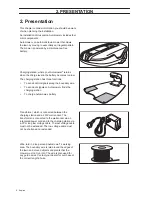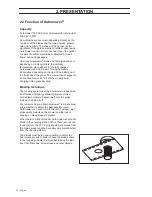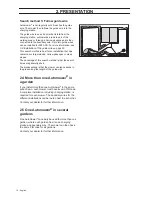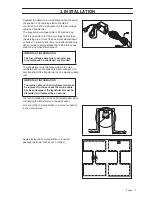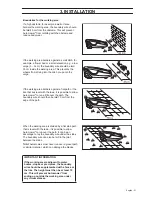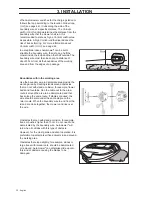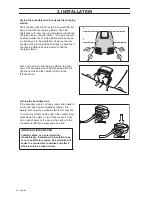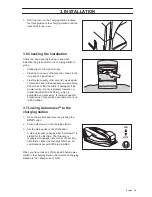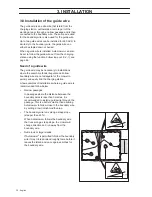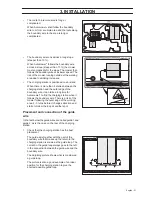
22 - English
3. INSTALLATION
When Automower
®
searches for the charging station or
follows the loop according to the function
Follow loop
(3-2)
(see page 46), it runs along the side of the
boundary wire at a specific distance. The
Corridor
width (3-2-3)
function determines the distance from the
boundary wire that the mower shall run. It is
recommended to state as high a
Corridor width
value
as possible. A high
Corridor width
value reduces the
risk of tracks forming. For more information about
Corridor width (3-2-3)
, see page 48.
In exceptional cases Automower
®
can be set to
straddle the boundary wire, that is to say, half the
mower inside the loop and the other half outside. The
boundary wire must then be kept at a distance of
about 50 cm from all the boundaries of the working
area and from the edges of a passage.
Boundaries within the working area
Use the boundary wire to demarcate areas inside the
working area by creating islands around obstacles
that can not withstand a collision, for example, flower
beds and fountains. Run the cable out to the area,
route it around the area to be demarcated and then
back along the same route. If staples are used, the
wire should be laid under the same staple on the
return route. When the boundary wire to and from the
island are close together, the mower can drive over
the wire.
Obstacles that can withstand a collision, for example,
trees or bushes higher than 15 cm, do not need to be
demarcated by the boundary wire. Automower
®
will
turn when it collides with this type of obstacle.
However, for the most gentle and silent operation, it is
preferable to demarcate all fixed objects in and around
the working area.
Obstacles that slope slightly, for example, stones or
large trees with raised roots, should be demarcated
or removed. Automower
®
can otherwise slide up onto
this kind of obstacle causing the blades to be
damaged.

